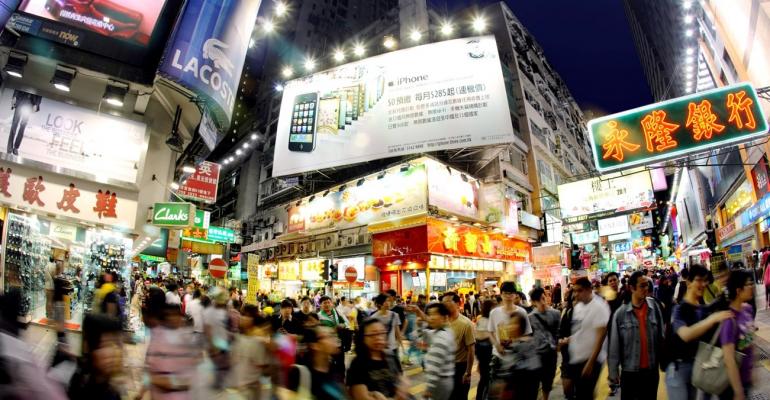These are the findings of a new Cruise Lines International Association study by Business Research & Economic Advisors (BREA) that looked at the economic contribution of cruises originating from and visiting ports in China, Japan and South Korea.
There were 3,312 cruise ship calls at the three countries in 2016 that generated 7.1m passenger visits and more than 1.2m crew visits (counting just those crew who went ashore), or a total of 8.38m visits.
Passengers spent an average of $295 per visit day across all ports in 2016, or a total of $2.1bn. This included spending for accommodations, shore excursions, food and beverages, crafts and souvenirs, local transportation, clothing, watches and jewelry, entertainment/nightclubs/casinos and other purchases.
Passengers on turnaround visits spent an average of $556 per day.
Crew spent an average of nearly $87 per visit day across all destinations, or a total of $109.3m.
Cruise lines' expeditures included $1.02bn on items and services led by vessel maintenance ($308.4m), fuel ($118.5m), travel agent commissions ($103.1m) and administrative expenses ($103m). After that came spending for food and beverages ($96.8m), other operating expenses ($96.8m), port charges and fees ($82.7m), advertising and promotion ($81.8m) and tours ($31.7m).
The primary direct beneficiaries of cruise spending were wholesale and retail trade ($962.3m), other services and government ($693.9m) and financial and business services ($679.5m). Combined, these three sectors accounted for approximately 72% of the regional direct impacts with $2.34bn in direct expenditures, $1.18bn in value-added goods and services and 19,252 full- and part-time jobs paying $594.4m in compensation.
The indirect and induced economic contribution is generated by the spending of the directly impacted businesses and their employees, which is then spread throughout the corporate and consumer sectors of each economy. These impacts totaled $3.98bn in output, $1.72bn in value-added goods and services and 27,934 full- and part-time jobs paying $749.6m in compensation.
Manufacturing, financial and business services, and agriculture accounted for approximately 79% of the total indirect and induced impacts with $3.16bn in output, $1.22bn in value-added goods and 19,893 full- and part-time jobs paying $491.1m in compensation.
Combining the direct, indirect and induced contributions, the total economic contribution of cruise tourism in the three North Asia economies amounted to $7.21bn in output, $3.23bn in value-added goods and services and 51,631 full- and part-time jobs paying $1.5bn in compensation.
CLIA member lines reported they employed 19,304 residents of North Asia as shoreside staff or crew. China, alone, accounts for 98% of this total with 18,974 employees. Including these cruise line employees and staff, the total employment impact increases to 70,935 jobs paying $1.8bn in compensation across China, Japan and South Korea.
China had 1,041 cruise calls during 2016, with Shanghai and Hong Kong accounting for 60% of the calls. Most calls were embark/turnaround visits: 837, or 80%.
Most passenger spending (60%) in China went to accommodations, transportation and retail shopping. Most crew spending (58%) went to food and beverages and shopping
Japan had 1,526 calls, with Fukuoka, Nagasaki, Okinawa and Kobe accounting for 46% of the calls. Most calls were transit visits: 1,314, or 86%.
About 46% of passenger spending in Japan went to shopping and shore excursions, while crew spending went mainly (58%) to food and beverages and shopping.
South Korea, a transit destination, had 745 calls. About 41% of passenger spending went to shore excursions and an additional 26% for shopping. Crew spending mainly went to shopping (48%) and food and beverages (35%).
BREA said it used research methodology similar to other cruise tourism impact studies for Southeast Asia, the US, Europe, Australia, Canada and the Caribbean so the data from North Asia can be compared with other regions.
CLIA's full '2016 North Asia Economic Impact Study' is available here.
Copyright © 2024. All rights reserved. Seatrade, a trading name of Informa Markets (UK) Limited. Add Seatrade Cruise News to your Google News feed.


